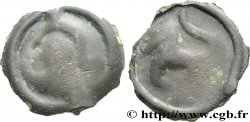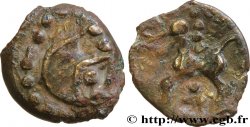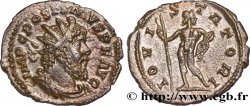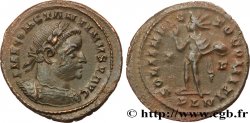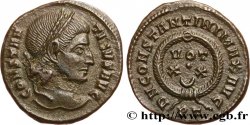v15_0410 - BITURIGES CUBI, INCIERTAS Bronze au cheval et aux trois annelets
MONNAIES 15 (2002)
Precio de inicio : 138.00 €
Valoración : 250.00 €
lote sin vender
Precio de inicio : 138.00 €
Valoración : 250.00 €
lote sin vender
Tipo : Bronze au cheval et aux trois annelets
Fecha: c. 60-50 AC.
Metal: bronce
Diámetro: 17 mm
Eje de acuñación: 9 h.
Peso: 2,88 g.
Grado de rareza: R2
Comentarios sobre el estado de conservación:
Beau portrait, revers complet entouré d’un bourrelet. Patine verte
N° en los catálogos de referencia :
Anverso
Titulatura del anverso: ANÉPIGRAPHE.
Descripción del anverso: Tête stylisée à gauche, la chevelure en trois grosses mèches.
Reverso
Titulatura del reverso: ANÉPIGRAPHE.
Descripción del reverso: Cheval sexué, à gauche ; au-dessus, A renversé ; au-dessous, trois annelets posés deux et un.
Comentario
Ces monnaies sont classées comme étant des bronzes, c’est à dire frappées. Cet exemplaire nous fait douter ; les traces de coulées de flan qui sont bien visibles peuvent être présentes sur des monnaies frappées, les flans étant obtenus par coulée. Mais le bourrelet qui entoure l’empreinte fait plutôt penser à un potin coulé dans un moule en creux. Cet exemplaire a la particularité de ne pas avoir la double ligne d’exergue présente sur les deux monnaies précédentes, et d’avoir les trois annelets placés à l’inverse ; deux et un au lieu de un et deux. L’exemplaire illustré à la page 468 de la RN 1908 a cette même particularité, mais la tête de l’avers est à droite (cf. MONNAIES XV n°413).
These coins are classified as bronzes, that is to say struck. This example makes us doubt; the traces of flan castings that are clearly visible may be present on struck coins, the flans being obtained by casting. But the bead that surrounds the impression is more reminiscent of a potin cast in a hollow mold. This example has the particularity of not having the double exergue line present on the two previous coins, and of having the three annulets placed in reverse; two and one instead of one and two. The example illustrated on page 468 of the RN 1908 has this same particularity, but the head on the obverse is on the right (cf. MONNAIES XV n°413)
These coins are classified as bronzes, that is to say struck. This example makes us doubt; the traces of flan castings that are clearly visible may be present on struck coins, the flans being obtained by casting. But the bead that surrounds the impression is more reminiscent of a potin cast in a hollow mold. This example has the particularity of not having the double exergue line present on the two previous coins, and of having the three annulets placed in reverse; two and one instead of one and two. The example illustrated on page 468 of the RN 1908 has this same particularity, but the head on the obverse is on the right (cf. MONNAIES XV n°413)








 Informar de un error
Informar de un error Imprimir la página
Imprimir la página Comparte mi selección
Comparte mi selección Haz una pregunta
Haz una pregunta Consignar / vender
Consignar / vender
 Descriptivo
Descriptivo


